Everyone loves coming to the Zoo and seeing the animals. But without the hard-work and dedication of our zookeepers, there wouldn’t be any animals- there wouldn’t be any Zoo.
So, to celebrate Zookeeper Appreciation Week, we’re highlighting the joy and passion our keepers have for the animals they care for and the work they do.
Australia and South America Mammals
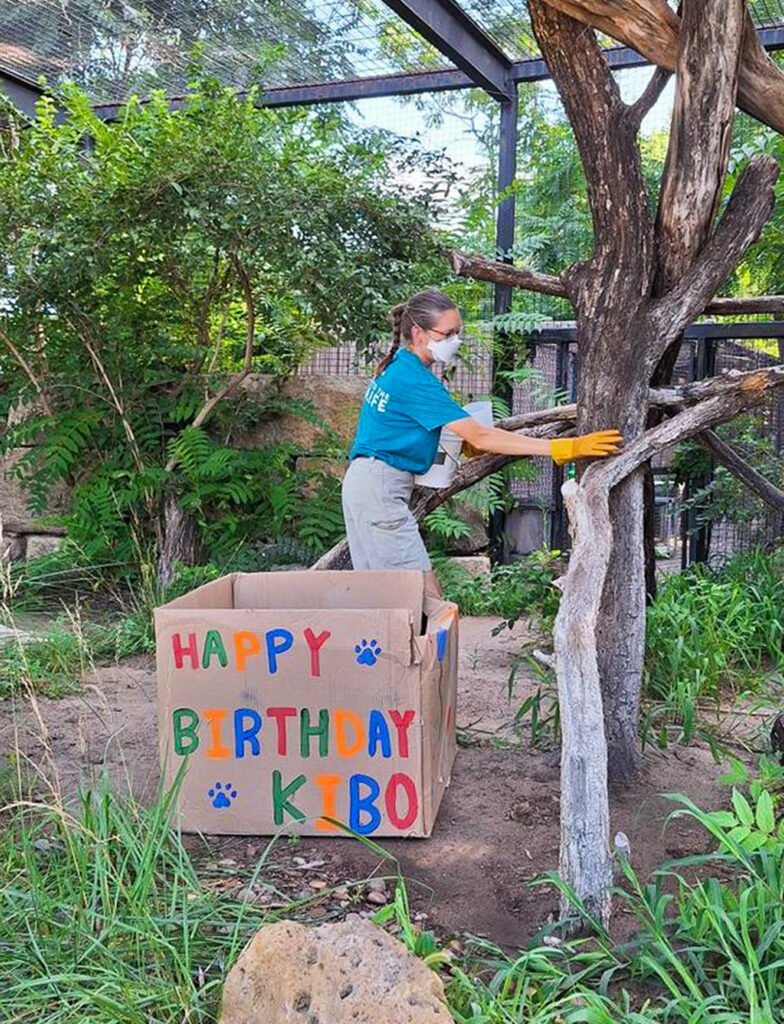
Zookeeper Micala Teetzen works with the Australia and South America mammals.
One of her roles as a zookeeper is to provide enrichment for the animals she cares for.
“Enrichment is meant to evoke natural behavior. So, stalking, continued searching for the food instead of just plopping it in front of them. It’s different ways to make it challenging, make them use their sense of smell and preying instincts,” Teetzen said. “We do a variety of different things.”

Kibo, the Zoo’s caracal, celebrated his seventh birthday with plenty of enrichment goodies. In addition to his Birthday Box and Ice Birthday Cake, Teetzen hid meatballs around the habitat for him to find. There was even a fish in a tree, which Kibo excitedly found and devoured.
“Enrichment lets me be creative and it gives variety to the day. It’s what makes it interesting for me and what makes it interesting for them,” Teetzen said.
The African Veldt
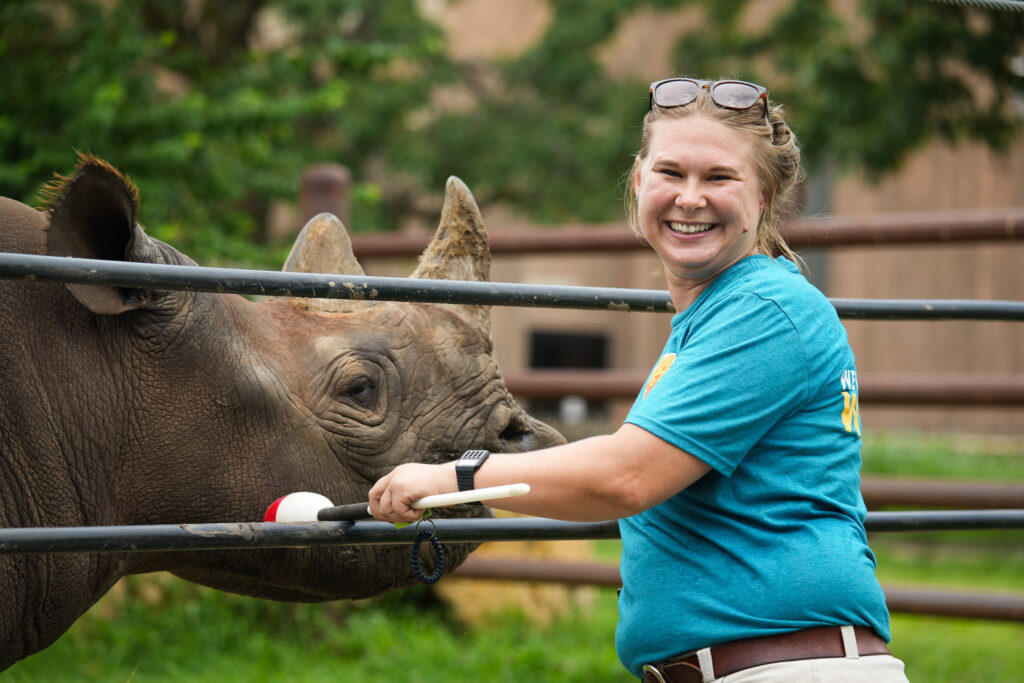
Zookeeper Kayla Jordan’s favorite part of working with KJ, the Zoo’s two-year-old Black Rhino, is training.
“Getting him to learn the behaviors that help us take better care of him, like doing routine blood draws and stuff are really important. Those are things he’s going to use for the rest of his life,” Jordan said. “Getting him to learn all the behaviors we need from him is one of the most rewarding parts of my job.”

KJ loves training. Jordan described him as being like a golden retriever- everyone’s his best friend. KJ knows that if he responds well to training, there’s a reward of banana slices and oats waiting for him on the other side.
“It helps us take better care of him,” Jordan said. “Teaching him things that he’ll use for the rest of his life and will help him live a better life- it’s an honor.”
The Tropics
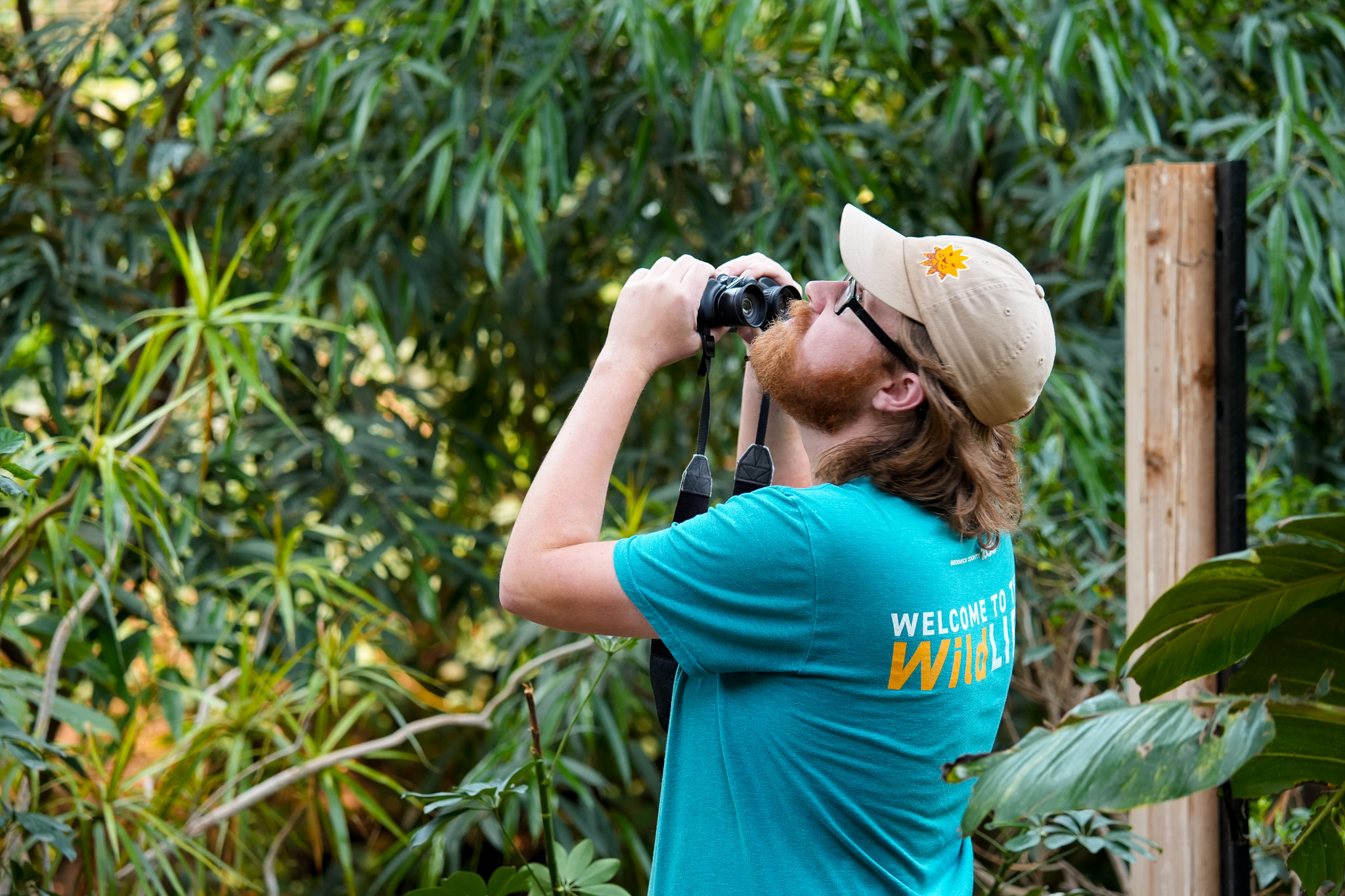
Zookeeper Carter Kleoppel peers up at the canopy of trees in the Tropics through his binoculars. He’s getting ready to put out feeding trays for the birds. As he sets out the food, birds like the crested wood partridge, violet-backed starling, and crested coua flock to him to get their fill.
“For the main free-fly area of the Tropics, everything is on one or two trays. But it has a big mix of ingredients so birds can kind of pick and choose depending on their specific diet and what they need,” Kleoppel said. “We have 12 feeding areas throughout the building where we will put both aerial trays for our flying birds and ground trays for our birds that like to be on the ground.”

The Tropics is home to hundreds of birds. This variety and diversity within the habitat is one of Kleoppel’s favorite things about working as a keeper.
“We have about 50 species free-flight in this building on about an acre of land that’s basically planted like a forest. So, it’s as much behavioral observation and just bird watching as it is feeding the birds,” Kleoppel said. “And the birds, since they’re in such a natural environment really do act a lot like wild birds. So, I feel like we’re providing a really good space for them to be able to exhibit natural behaviors.”
Children’s Farms
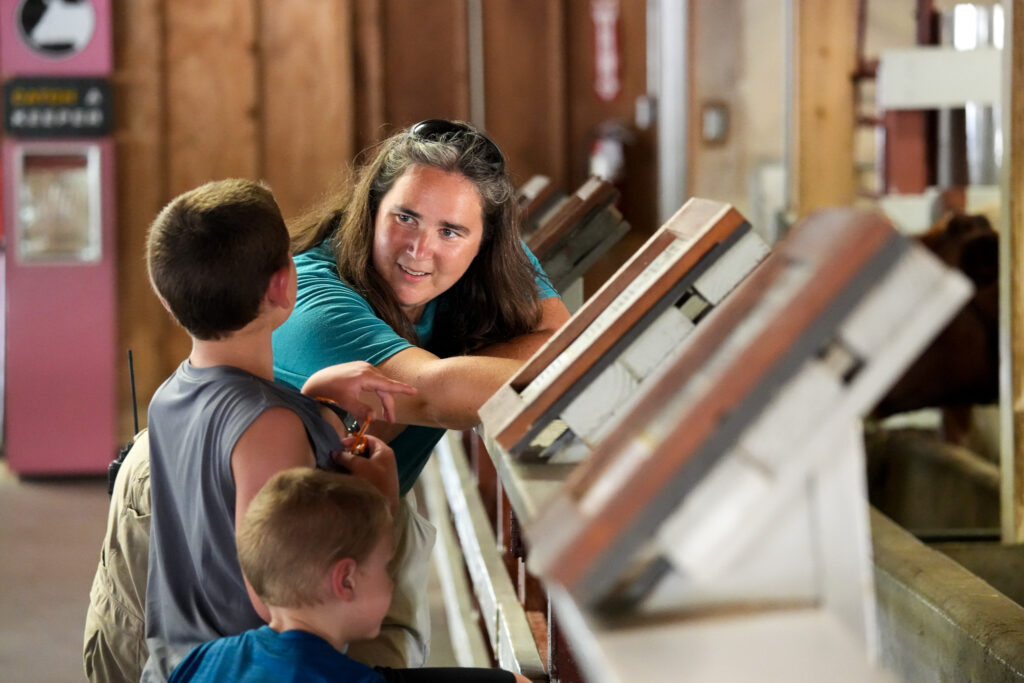
When feeding the cows at the Children’s Farm, zookeeper Rebecca McMinn has to follow a specific order when dishing out delicious hay.
“We generally will start with the highest, the dominant one, and work our way down,” McMinn said. “There’s always somebody who’s going to be kind of keeping the cow herd kind of in place. And so normally you have those that are on the higher end, they’re the ones that are keeping the others in check, making sure that they know what’s acceptable, what’s not. And that’s good for any group dynamic.”

Not only does each cow have a unique position in the hierarchy, but they have unique personalities as well. McMinn said that her favorite thing about working with the cows is their varied personalities.
“When you have different personalities, it provides a little bit of a variation to your day-to-day job. Most of the time, they are pretty laid back,” McGinn said.
Australia and South America Birds
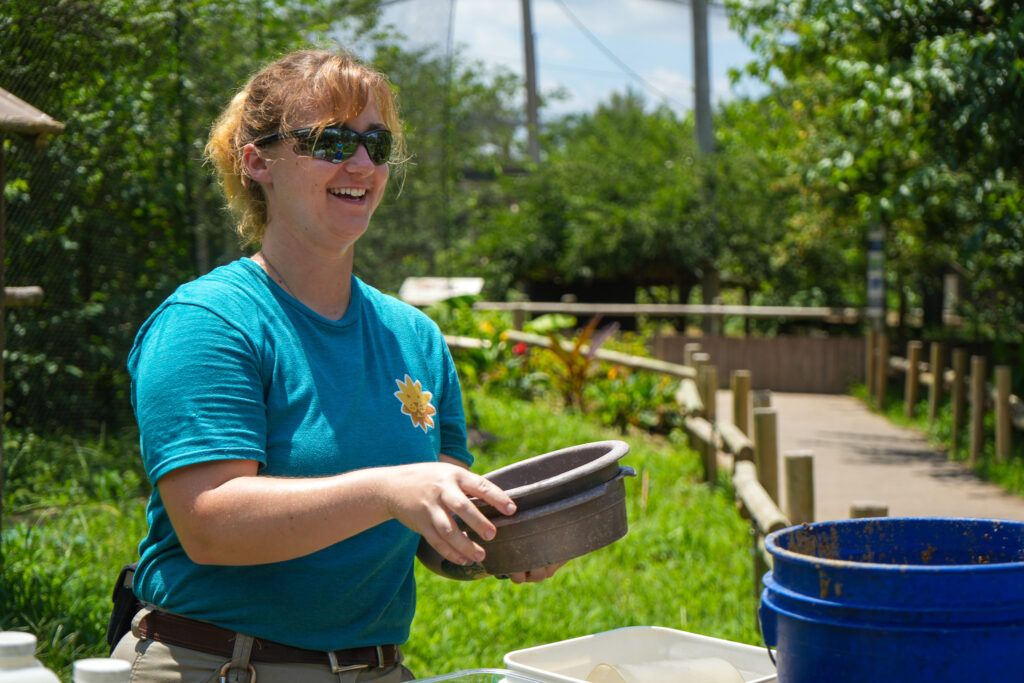
Ana Frace is the Zoological Manager for the Australia and South America birds at the Zoo. One of the birds Frace is responsible for caring for is the tawny frogmouth.
“They are a nocturnal Australian species,” Frace said. “Their main form of defense is to mimic tree bark. So, during the day, they’ll tuck themselves up in a tree. They do hunt, technically, but a lot of times during the day, they will just sit there with their beaks open and if a bug or something happens to fly into their mouth, they can just snap it shut.”
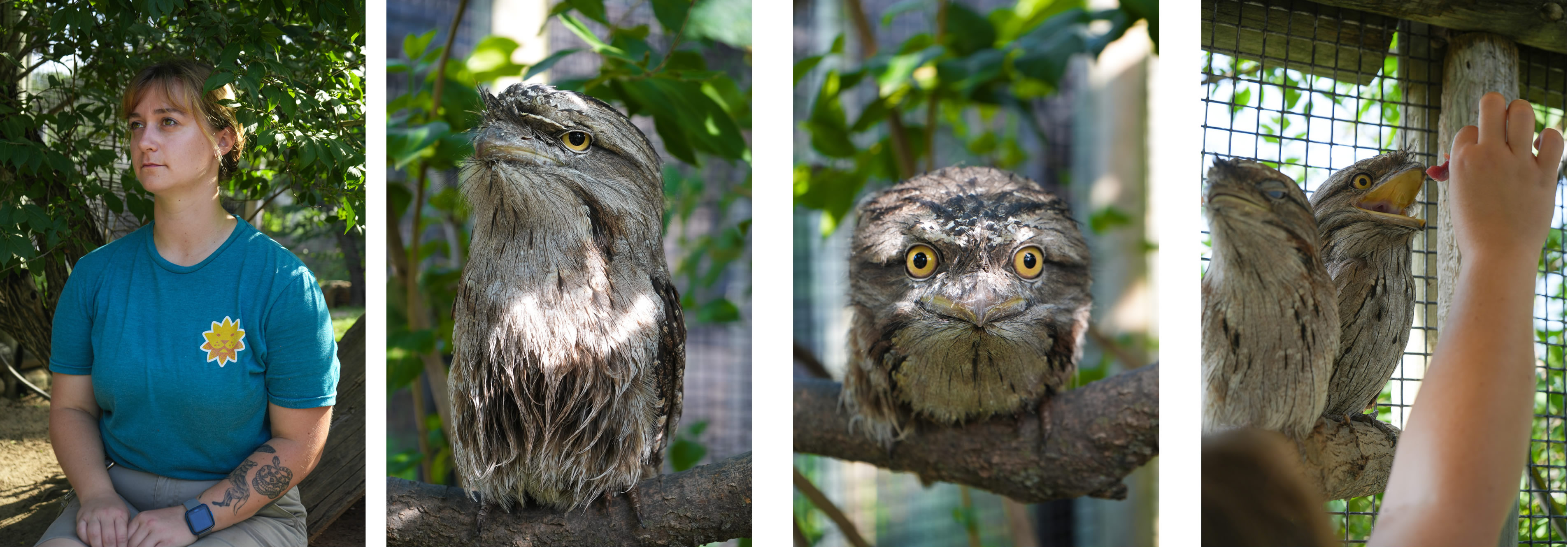
Sedgwick County Zoo is home to seven tawny frogmouths. Frace said that the Zoo provides enrichment for these birds by providing overnight snacks of live bugs or toys for them to interact with. Figuring out what enrichment works for the birds and what they enjoy the most is a fulfilling job for Frace.
“In my role as the Zoo Manager, it really requires me to use my best problem-solving skills because everyone is so individualized that I have to be able to find creative solutions for their needs,” Frace said. “And so, this job really makes it a challenge for me to do my best for the animals and for the keepers every day. And I like that challenge.”
Amphibians and Reptiles
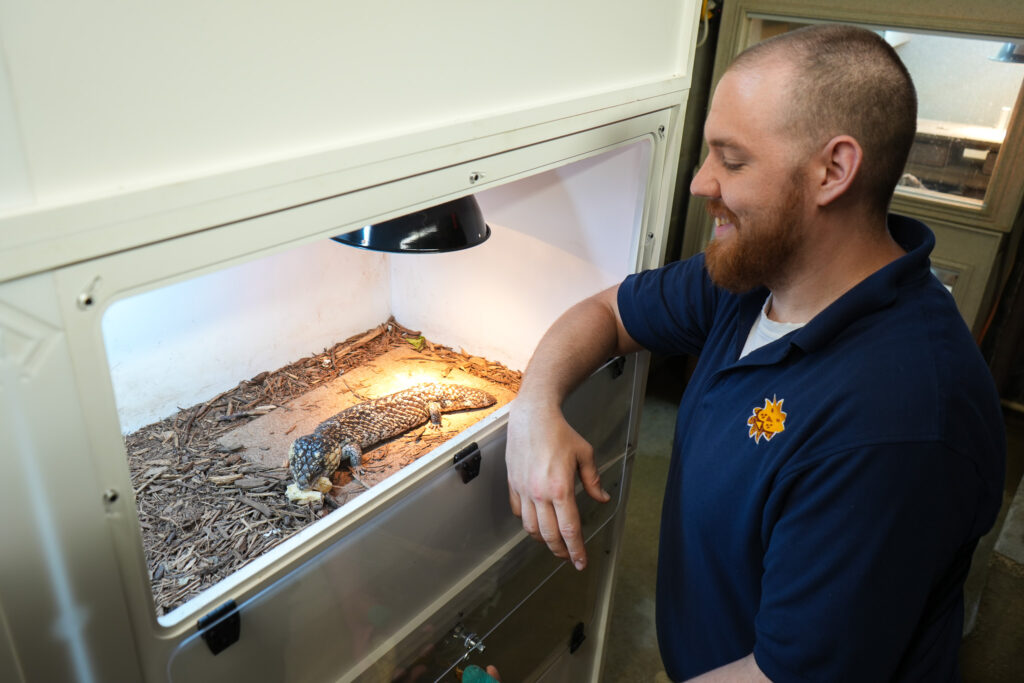
Ectotherm keeper David Kelley has loved reptiles since he was a kid. And being a zookeeper in the Amphibian and Reptile building allows him to work with his favorite animal – the shingleback skink.
“They were never imported from Australia in very big numbers…Now, that being said, they’re not endangered or anything. If you were a kid in Australia, that’d be your first pet,” Kelley said. “They’re just such and a neat little critter and they’re goofy.”

Kelley enjoys building the habitats that house the amphibians and reptiles. Creating the enclosure that will allow them to be on-exhibit for the guests to see is rewarding for him.
“It’s interesting to be able to be able to basically create a microhabitat to show what this animal looks like to help showcase natural environments,” Kelley said. “We want to be able to take people on a global adventure as they walk through this building.”
North American Prairie
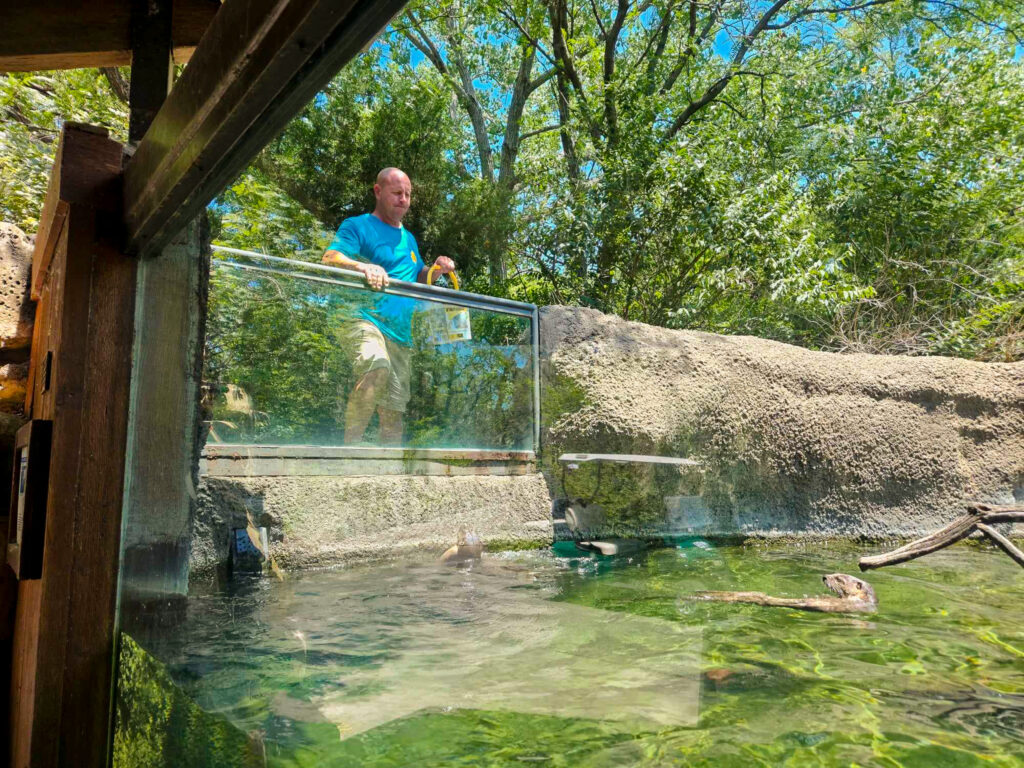
Zookeeper Brian Helten has worked in the North American Prairie habitat for over 25 years. He not only cares for the animals, but over the years he’s gotten to know them individually.
“We learn their personalities and so we kind of can tell when they’re not acting right, which is a benefit,” Helten said. “We’re constantly working with them and out here taking care of them. So, we can tell if something’s wrong.”

Helten finds that training with the animals makes them easier to work with overall since a trust has been developed between keeper and animal. Husbandry and training are his favorite part of working with the Prairie animals, like the river otter.
“Working with them for an end goal that’s going to benefit us, the animals, the veterinarians,” Helten said. “So, when we can teach them a certain behavior that’s going to benefit us in caring for them is probably one of the things that is more rewarding.”
Penguins
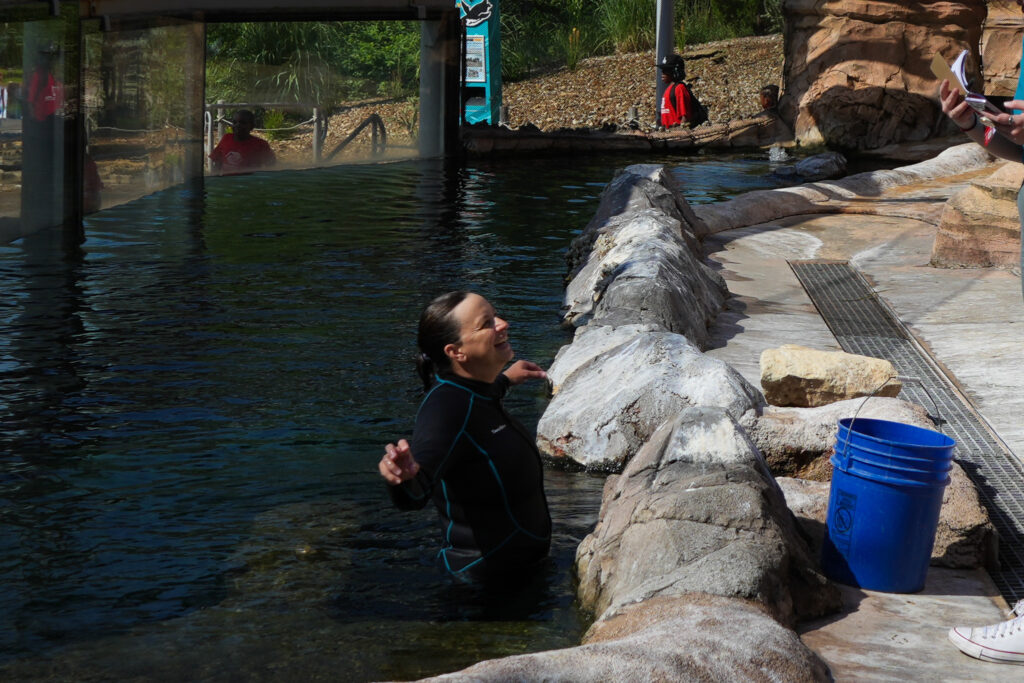
Bird keeper Michelle Birket dons a wetsuit and without hesitation enters the penguin pool. This habitat is home to 30 Humbolt penguins, ranging in age from one to 25.
“They really are very fantastic…They all have really very different individual personalities,” Birket said. “It’s very important to be able to read their behavior to know what it is they like to make sure that we can give them the best care.”

The penguins experience enrichment through novelty in their environment. Birket says this could be offering them a new snack, adding toys like a bubble machine into the habitat, and even just the presence of a new keeper. But her favorite part of working with the penguins is getting to see the connection the birds make with guests.
“You will find animals in zoos that people would otherwise likely never have the chance to see for themselves,” Birket said. “They see that animal, they make that connection, and they are inspired to do good things not only for these animals, but for the planet as a whole.”
African Elephants
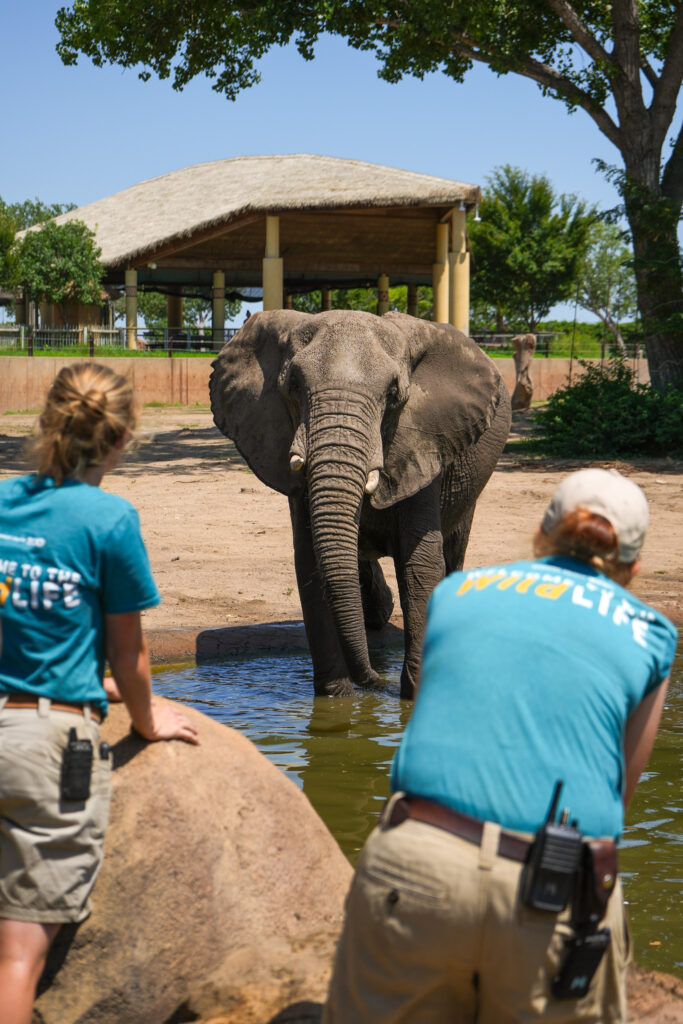
The Elephant Care Team ensures that the African Elephants at Sedgwick County Zoo live healthy and enriched lives. This is in part done through husbandry training.
The Team said that all of the training serves a purpose. They train behaviors that are natural for the elephants to be doing.
This training allows the elephants to participate in their own medical care, such as opening their mouths for dental cleaning or presenting body parts for routine blood drawing.

On particularly hot days, the Team will encourage elephants to enter the watering hole to stay cool. For Stephanie, the Zoo’s oldest elephant, playing in the pool not only helps her keep cool, but it’s like a water aerobics class that not only helps keep her joints limber, but her mind active as well.
They said that being able to watch the elephants grow and learn is incredibly rewarding. Being able to enrich the lives of our elephants and contribute research to the greater zoo elephant community is also extremely fulfilling.
But the partnership the keepers have not only with the elephants, but with each other, is what truly makes every day exciting and fun.
Quarantine and Vet Hospital
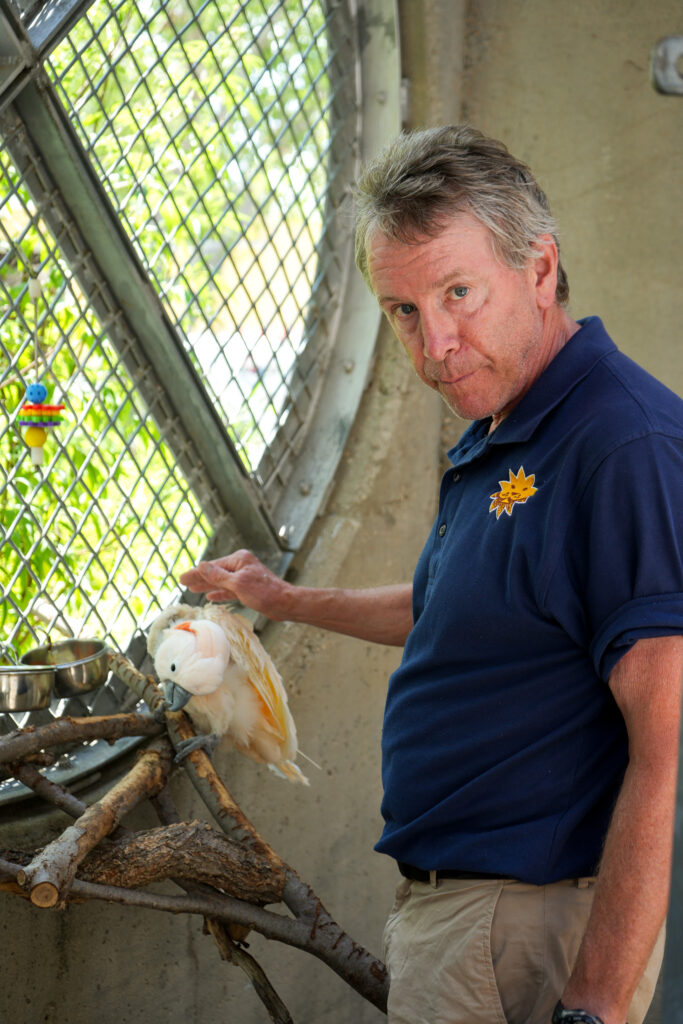
Just like people, animals can get sick and need to go to the doctor. Kent Tuxhorn has been a zookeeper at SCZ’s Quarantine and Animal Hospital for 30 years.
The Zoo also takes in animals that people previously kept as pets. When these wild animals become too much to handle, they’re often abandoned. These animals are sometimes taken in by zoos. That’s how Mo, a cockatoo, came to the Zoo.
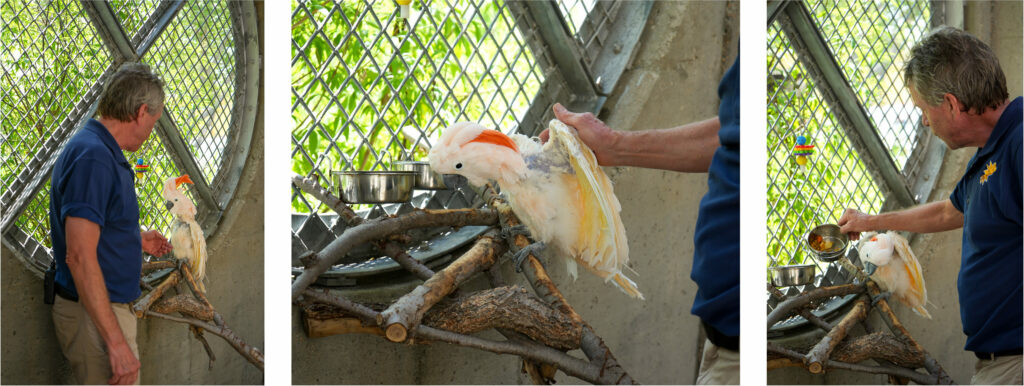
“She’s just kinda hanging out. We’re trying to potentially find a forever home for her,” Tuxhorn says as Mo interrupts him with a screech. “She has her own language.”
When asked what Mo’s saying, Tuxhorn has a simple answer: No idea.
Tuxhorn works with a myriad of animals at quarantine. This variety is his favorite part of the job.
“I like the variety, always something new,” Tuxhorn said. “You work by yourself, but I also just like the behind the scenes. Working with the vets and the vet techs, it’s rewarding. And everybody works well together. It’s in my opinion the best place in the Zoo to work.”
Commissary
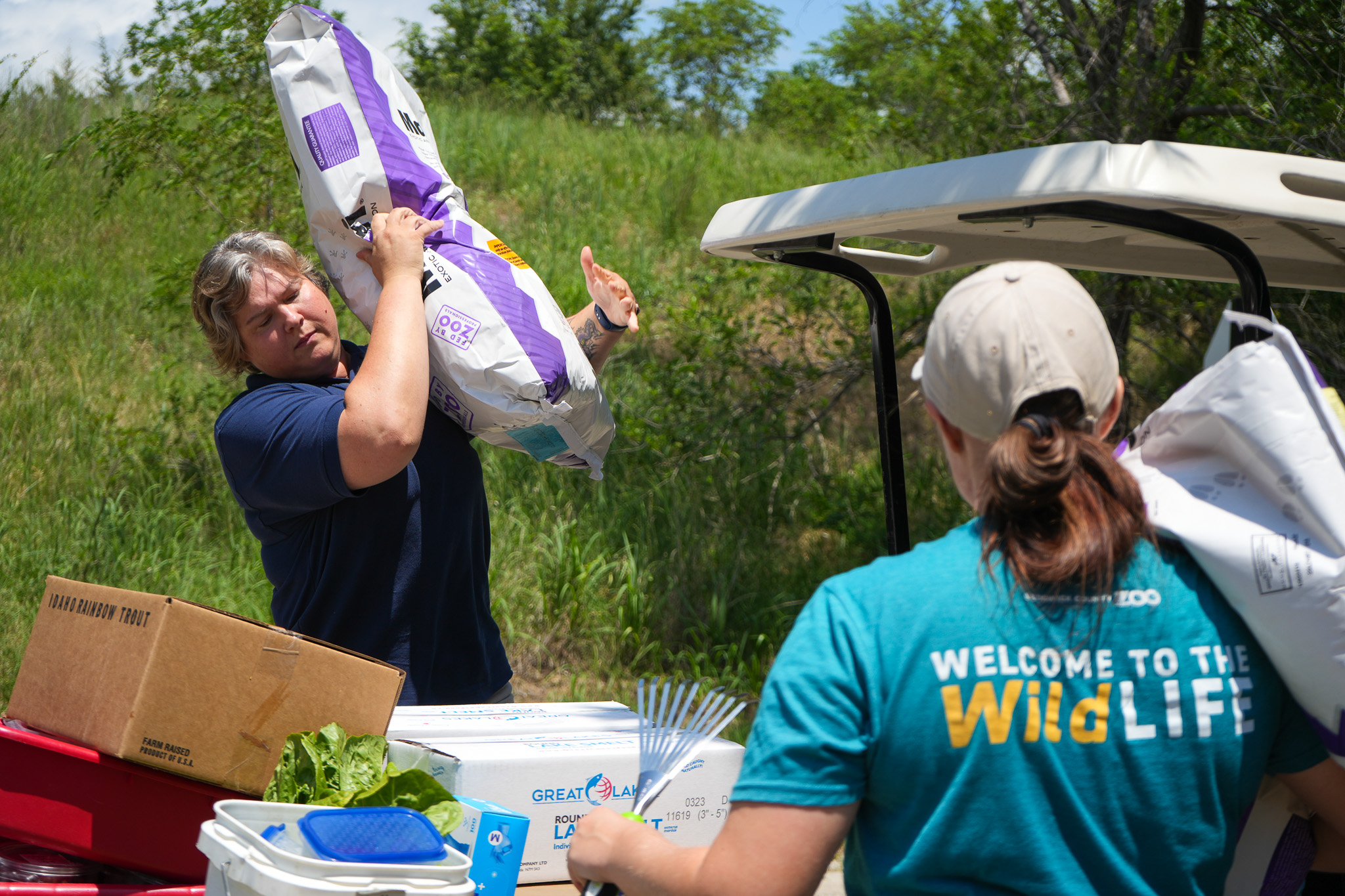
The food our animals eat doesn’t just magically appear. It’s provided by the zookeepers at the Commissary. Charlsye Laster, Audra Pitts, and Geneva McKown make up this three-person team that keeps all the SCZ animals well fed.
“Our primary job function is to ensure the daily preparation of all of the diets that get delivered to the specific areas,” Laster said. “We also procure all the supplies for the Zoo. So basically, if the zookeepers need it, we’re generally the ones that would buy it.”

Pitts said they’re the dietary and supplies hub for the entire Zoo. They’re connected to every department.
Without the Commissary, the Zoo wouldn’t be able to run. Their work is essential in keeping our animals happy and healthy.
“If we don’t do our job properly, no other department can do their jobs,” Laster said. “I like the fact that we’re relied upon.”
We’d like to say a big thank you to all the zookeepers that make the Sedgwick County Zoo what it is.
We appreciate the hard work they put in every day and the dedication they have for their jobs.
The next time you visit SCZ, thank a keeper and let them know how much their work means to you.